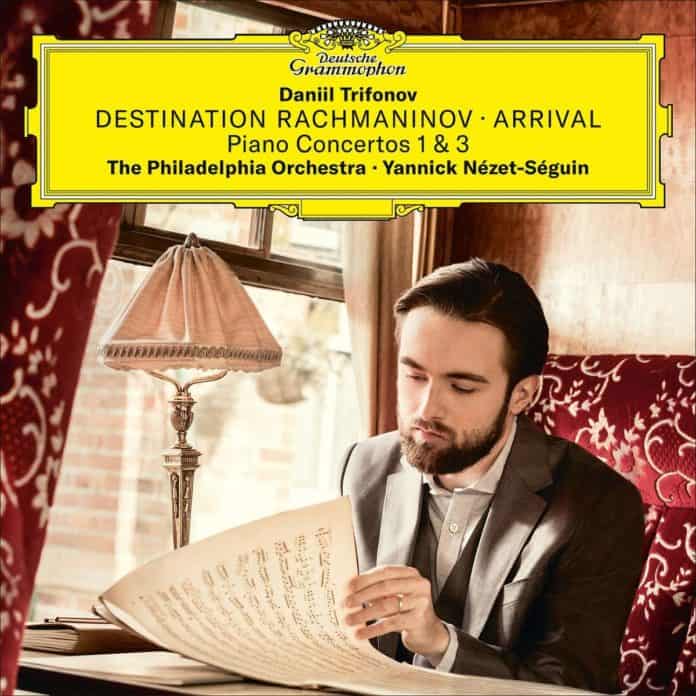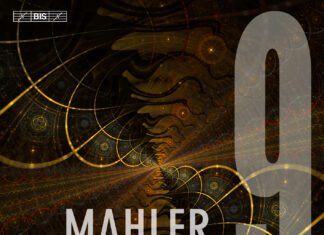Music Review Destination Rachmaninov – Arrival (Piano Concerto 1 & 3) – Daniil Trifonov / The Philadelphia Orchestra / Yanick Nézet-Séguin / Deutsche Grammophon
The High Arts Review Rating: ★ ★ ★ (3/5)
I had high expectations from this release. Having been slightly disappointed with the recording of the Second and Fourth Concertos by the same forces, this time I thought Trifonov would nail the First and the Third. Both have their “wow” moments and can dazzle even the more discerning listeners for whom Rachmaninov is just the harbinger of film soundtracks.
Unfortunately, my first reaction was negative and had to do mainly with the recorded sound. Only days after complaining about the uncontrolled audience coughing in another recent DG release, I was particularly annoyed to hear more distracting noises in this live recording of the Third: the first loud cough is heard at just 5 seconds after the beginning, when the strings begin with the famous opening theme (and in the first 20 seconds alone, there are at least three such instances). So, what’s wrong with just some coughing every now and then? Well, there’s more stage noise later on and it can be way too distracting. In the first movement of the Third, from 6:50-7:25 I wasn’t sure if the winds were playing, whether what I heard was heavy breathing from the pianist or if sheets of papers were shuffled around. I may quote the above timings, but noise and coughing can be really annoying in some of the most beautiful, quiet moments, as in the beginning of the Ossia cadenza in the first movement or the lyrical opening of the Intermezzo.
But recorded sound aside — and some people won’t mind the sound at all — let’s focus on the actual performance. If one looks at the timings alone, one soon realizes this recording does not follow Rachmaninov’s tempi closely. This, of course, won’t matter to most. In fact, what matters here is the sense of drive from both orchestra and pianist. And speaking of the orchestra, Nézet-Séguin produces some beautiful playing particularly from the cellos and brass in the first movement. However, some crucial orchestral detail, especially from the winds, is lost -listen, for example, from 2:05-2:10- and I am sure this has more to do with the recorded sound than the actual performance. As for Trifonov, it is clear from his entrance that he is determined to push the momentum forward. Despite this, it is the first time I hear his playing being so fuzzy and, again, this has to do with the recorded sound rather than his actual pianism. There are times when individual notes can be heard with difficulty. Still, there are some nice idiosyncratic touches by him, as in the climactic buildup at 8:01 where he briefly holds onto the last note before carrying on with the next phrase.
When the cadenza arrives, Trifonov shows his formidable power but again he is not helped by the unclear recording (there is also quite a bit of clipping sound coming from the instrument itself), especially from 12:46 to 12.50, during the very climax of the cadenza, where the notes could sound more transparent under different circumstances. The pianist’s style here is more measured than extrovert but it is a valid approach, I just wish we were allowed to hear more instrumental details from the recording.
The Intermezzo has some beautiful playing from the orchestra, lush strings and all, but again there are distractions, a result of some annoying stage or audience noise (as soon we enter the first minute, some weird rattling sound can be heard, which is repeated later). Here, I was surprised by Trifonov’s restrained entrance–this is not the mysterious “dark pearls flung on velvet” effect one would expect. Still, the dialogue between the soloist and orchestra, as well as the thrust into the Third movement are carried off successfully.
It is in the final movement that I would have wished for some more forward momentum: despite being slow, it is not among the slowest. And overall, why nothing is objectively wrong, I missed the quicksilver virtuosic playing by pianists like Volodos, Argerich, or from Buniatishvili, Lisitsa and Moog (to refer to recent pianists who impress with their breathtaking technique, following the composer’s tempi–even though their breakneck speed might not be to everyone’s liking).
What doesn’t help also is the lack of dynamic orchestral contrast. For in this movement, it is the clever juxtaposition of orchestra vs the piano that often provides the rhythmic thrust. Even the Hollywood-like final tune sounds dragged out and uneventful from both pianist and orchestra.
As for the First Piano Concerto, I can testify that this is a very fine reading, much better than the live Third. The orchestra does have more depth here, in fact, there are some very beautiful contributions by Nézet-Séguin, and accolades should go to the strings and winds (notice how the conductor emphasizes the beautiful wind playing at 6:28, for example, in the first movement). The recorded sound is also without problems, allowing every single note by Trifonov to be heard clearly. In other words, this recording of the First is a safe choice. It might not reach the virtuosic heights of Andsnes, Zimerman (a splendid First, also on DG) or Lisitsa (all three surpass even historical accounts of the work), nor reach the same level of emotional depth, but it is a very good rendition, nonetheless. True, as in the Third, this performance of the First would benefit if the sense of momentum and drive was more apparent, and the slow movement here does sound more autumnal than flowing (with a duration of 7:20, it is more an Adagio than an Andante, nearly 2 minutes longer than the composer’s own recording with Ormandy). But overall, if the recording of the Third was on the same level as that of the First, we would have been dealing with a very noteworthy release here.
Buy / Listen / Read customer reviews on Amazon
Reference recordings: Historical choices: Rachmaninov’s own with Ormandy (RCA), Earl Wild/Horenstein (Chandos). Modern choices: Argerich/Chailly (Philips), Buniatishvili/Jarvi (Sony), Moog/Milton (Onyx), Lisitsa/Francis (LSO), Zimerman/Ozawa (DG), Andsnes/Pappano (EMI)







